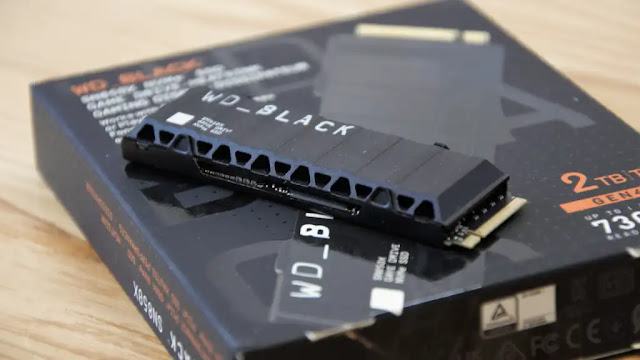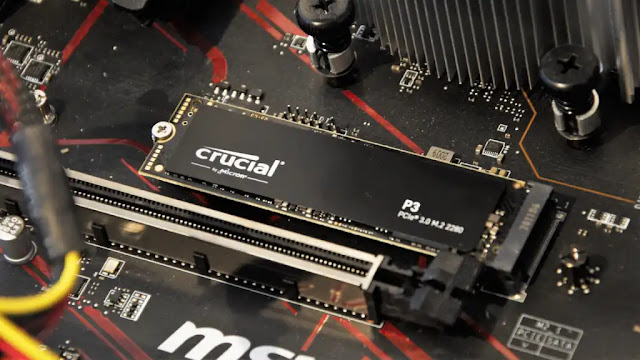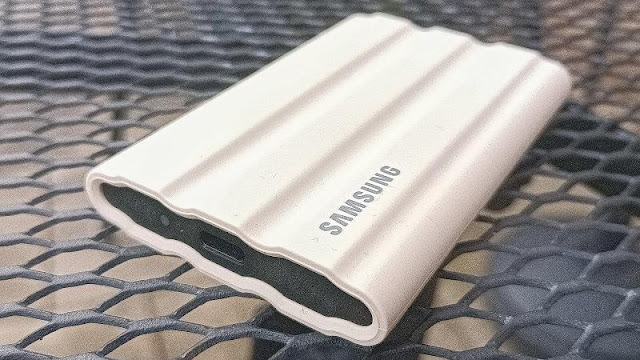The new Samsung 980 Pro SSD embraces PCIe 4.0 bandwidth for even greater speeds, but it isn’t all good news. Find out why in our full review.
Should I Buy The Samsung 980 Pro?
Pros
- Double the speed of PCIe 3.0
- Works in PCIe 3.0 M.2 slots
Cons
- No 2TB option at launch
- Needs an X570 or B550 motherboard
- Lacks integrated heatsink
Our Verdict
Price When Reviewed
- From $89.99
From being something special a few years ago, NVMe drives are now the norm for system builders. They’re easy to fit, offer substantially better performance over SATA SSDs, and the price can be highly affordable.
But for those that want even more performance, a new generation of enhanced NVMe drives arrived that could leverage the increased bandwidth of PCI Express 4.0.
This first generation of PCIe 4.0 drives was held back somewhat by their being only one controller available from Phison, the E16. This first controller attempt had some limitations, and system builders were keen to see alternatives.
Samsung makes some excellent PCIe 3.0 NVMe controllers, and therefore generated some excitement when the new 980 Pro series was announced. And, based purely on specifications, this drive is a far cry from Samsung’s previous flagship NVMe drive designs, and the Phison E16 controller.
But is there more to this story than the increased bandwidth of PCIe 4.0? In a word, yes.
Design & Build
NVMe drives aren’t an open goal for those with design ambitions. They’re small single-sided cards with surface mounted electronics, and a label, if we are lucky.
Almost all the other PCIe 4.0 NVMe drives we’ve seen embellished this concept with a heatsink of some variety, to negate the build-up of heat during prolonged operations.
Samsung doesn’t consider this an issue on the 980 Pro, as it has no included heatsink or any visible adaptation to keep it from getting hot while in use. Luckily, many of the motherboard makers are less blasé about heat, and most have at least one M.2 slot with an integrated heatsink, at least on the gaming boards.
The drive is the standard 2280 length, and it will fit and work on an existing PCIe 3.0 M.2 slot if you are waiting for a new system to be built, but you want this storage now. But, under PCIe 3.0, it will only deliver approximately half the performance that PCIe 4.0 mode offers.
What demands some analysis are the specifications of the different capacity versions of the 980 Pro, as the capabilities of the 250GB and 500GB are not the same as the 1TB version, and projecting those numbers the 2TB should be the best performer when it does finally appear.
The differences are to do with the number of NAND modules that each uses, as parallel transfer operations increasing the collective speed.
Looking at the specification chart for the 980 Pro reveals that depending on the capacity, internal hardware configuration can be radically different, and these variations can impact significantly on the performance. You're not just choosing the size you need.
The fastest memory on the 980 Pro is the LPDDR4 DRAM, and then beneath that is the SLC cache and then the active storage of the drive, TLC NAND. Where the 1TB model gets 1GB of DRAM, the two smaller capacities only get half as much. And, the 1TB drive also has between 6GB and 114GB of SLC cache, where the 250GB drive gets between 4GB and 49GB, and the 500GB between 4GB and 96GB.
| 250GB | 500GB | 1TB | |
| Interface | PCIe 4.0 x4 Lanes, NVMe 1.3c | ||
| Form factor | M.2 2280 Single-sided | ||
| Controller | Samsung Elpis | ||
| NAND | Samsung 128L 3D TLC | ||
| LPDDR4 DRAM | 512GB | 1GB | |
| SLC Write Cache Min | 4GB | 4GB | 6GB |
| SLC Write Cache Max | 49GB | 94GB | 114GB |
| Sequential Read | 6400MB/s | 6900MB/s | 7000MB/s |
| Sequential Write SLC | 2700MB/s | 5000MB/s | 5000MB/s |
| Sequential Write TLC | 500MB/s | 1000MB/s | 2000MB/s |
| Write endurance | 150TB | 300TB | 600TB |
But the SLC cache on the larger 1TB drive is also wired differently. On the 250GB drive, it peaks at 2,700MB/s of write performance, where the 500GB and 1TB drives can handle 5,000MB/s.
And finally, the TLC is also impacted by the greater parallelism on the larger drives, reducing the without cache performance of the 250GB unit to only 500MB/s, the 500GB to 1,000MB/s and the 1TB version to 2,000MB/s.
These are the speeds that will surface when the cache and DRAM are saturated, and it isn’t markedly different from those we might expect to see on PCIe 3.0 NVMe drives that use the similar NAND modules.
With the reduced TBW that the smaller drives offer as an additional factor against the smaller drives, it’s a wonder that Samsung bothered with the 250GB and 500GB capacities. Purely on specifications alone, there seems no good reason for them to exist.
PCIe 4.0 vs 3.0
As PCI Express (PCIe) 4.0 is a relatively new technology, we need to talk about what this offers above and beyond the standard PCIe 3.0 that most computers use.
It might seem obvious, but since it replaced PCI/PCI-X and APG slots, PCIe has undergone a series of iterations from version 1.0a in 2003, through 1.1, 2.0, 2.1, 3.0, 3.1 and now 4.0.
Version 5.0 is already documented, 6.0 is planned, and development undoubtedly won’t stop there.
Where early computer technology focused on parallel connections, like the old ribbon cables in IDE drives, PCI like USB is modelled around a high-speed serial communication, and with each generation, the speed of those serial data streams increased.
PCIe 3.0 has a data throughput of 0.985GB/s per PCIe lane, and PCIe 4.0 doubles that performance to 1.969GB/s. It’s expected that versions 5.0 and 6.0 will further double and quadruple those numbers when the technology is finalised.
Each M.2 port on a PCIe 3.0 motherboard has either two or four PCIe lanes allocated to it, the usual is four, giving a maximum theoretical throughput of 3.938GB/s. This bandwidth effectively caps reading or writing, of any NVMe connected by one of these ports to less the 4GB/s, and the best we’ve experienced delivered around 3.8GB/s.
With PCIe 4.0 that theoretical throughput jumps to 7.877GB/s on a four-lane M.2 slot, boosting the data movement to and from that device to over 7GB/s, assuming it is designed to use PCIe 4.0 mode fully.
It is worth noting that the same performance could have been achieved with PCIe 3.0 by allocating eight lanes to the slot, and a carrier card can accomplish this twice in a PCIe x16 slot. It wasn’t a consumer option because most enthusiast motherboards and processor combinations don’t have that many PCIe lanes to use eight lanes on each M.2 slot.
The obvious question that some of you might be wondering is, what will PCIe 4.0 do for video cards? The answer, counter-intuitively, is that it has almost no impact over video card speeds. Other than loading geometry and textures on to the card, all the performance-related activity takes place between the card memory and the GPU and therefore isn’t influenced by PCIe throughput.
It’s a well-documented fact that some modern video card designs aren’t appreciably slowed down by connecting them to PCIe 3.0 x8 slots, and not the x16 lane variety.
If you want PCIe 4.0 now, for whatever reason, you are limited to AMD systems. As the processor and motherboard making sections of Intel appear to have overlooked that critical memo when PCIe 4.0 became a standard in 2017.
Hilariously, Intel has a flash memory division that makes the D7-P5500 and D7-P5600 PCIe 4.0 Enterprise-class SSDs, hardware that requires an AMD system to use.
System builders need either a B550 or X570 chipset motherboard and a Ryzen processor that supports PCIe 4.0. I assembled a rig based on the X570 chipset specifically to test PCIe 4.0 hardware, as without this the 980 Pro would automatically downgrade to PCIe 3.0 speeds.
Intel promises a new Rocket Lake chipset motherboard in early 2021 with PCIe 4.0, and Gigabyte accidentally blurted out that existing Z490 motherboards might support a single M.2 PCIe 4.0 slot with new 11th-gen processors.
Until new hardware is launched, these plans aren’t concrete, and it could be another six months or more before Intel has this capability to offer.
Performance Benchmarks
I expected this drive to be fast, and in short, it is. But I also wanted to better understand some of the other issues surrounding PCIe 4.0 NVMe drives, specifically power consumption and heat generation.
But first, the headline numbers are very impressive, with the default profile on CrystalDiskMark 7.0b delivering astonishing 6,773MB/s reads and 4,917Mb/s writes. Other synthetic benchmarks weren’t as impressed, but their results always exceeded the best PCIe 3.0 NVMe products, and the scores of Phison E16 based PCIe 4.0 drives.
However, there are a few snags that I need to mention. The first is an issue that all NVMe drives based on NAND technology run into when they exhaust their cache, and they default to a speed that the TLC modules onboard can handle.
On the 500GB capacity review drive, this would drop the write performance to about 1,000MB/s on the cache was saturated for the rest of the write. To see this problem requires writing huge files, but throw something big enough at any NAND drive and it will eventually happen.
The other issue is an absolute certainty if you don’t have a system with a heat spreader over the 980 Pro, overheating.
When I first tested, I left the spreader off the MSI X570 Gaming Plus, since I wanted to take photos with it on the board, and the results weren’t positive. Samsung rates the 980 Pro to 70C, but throttling kicked in before that threshold and write performance dived when it was hit.
For regular users who don’t run ten benchmarks in a row, this might not be anything that they experience. But, for those intending to hit this technology hard, they need to deploy a heat spreader and even some active cooling around the slot.
Why Samsung doesn’t provide any heatsink is a curious choice, seeing that every other PCI 4.0 NVMe designs I’ve seen incorporate one.
Price
The Samsung 980 Pro is available in only three capacities at launch, those being 250GB, 500GB and the 1TB. I’ve seen a technical specification sheet that mentions a 2TB model, but that option isn’t available yet.
In the UK these have an MSRP of £82.99, £135.99 and £207.99 respectively, making this one of the most expensive NVMe drives per GB available. Samsung doesn't sell it directly, but you can get it from Amazon, Ebuyer, Overlockers and Scan.
On Newegg and Amazon in the USA, they are priced at US$89.99, $149.99 and $229.99, making some options slightly cheaper than in Europe.
While it looks pricey compared to PCIe 3.0 NVMe drives, the competitive products from Gigabyte and Sabrent are both around $200 for the 1TB capacity, making the Samsung prices track with them.
As NAND spot pricing is due to shrink due to oversupply in the next few months, it will be interesting to see how long the 980 Pro costs this much before it sees a reduction.
See our chart of the best SSDs to see what other options you have.
Verdict
There are plenty of positive things about the Samsung 980 Pro, but much of that falls into the category of ‘be careful what you wish for’.
On paper, the doubling of bandwidth for M.2 NVMe storage devices looked like slamdunk. But, that thinking failed to consider that the power consumption of this throughput will have a significant thermal impact and that NAND technology isn’t twice the speed this year as it was in 2019.
Suppose you occasionally launch applications and write data. In that case, the Samsung 980 Pro will perform admirably, but if you hit it hard repeatedly, the temperature will rise, and without active cooling, it will eventually throttle. There is no free lunch in thermodynamics, with unrelenting use temperatures grow, and eventually, the throughput speeds will be lower than a PCIe 3.0 drive.
And, the NAND technology on this drive only looks this fast because it has 1GB of LPDRR4 caching it, but once that and the SLC is fully saturated we see the underlying performance of the Samsung 12-Layer V-NAND 3-bit MLC, and that’s much less.
These things said, at least Samsung built a controller for this device that can use most of the bandwidth of PCIe 4.0, where many early PCIe 4.0 NVMe designs opted to use the Phison E16 controller that can only hit 5,000MB/s reading, and 4,800MB/s writes.
However, Phison has worked on the E16 and created the E18, a new controller that may eclipse the Samsung Elpis, and has already incorporated it into the Sabrent Rocket 4 Plus. Hopefully, we’ll review one of those soon to see how it compares.
There are scenarios where the Samsung 980 Pro delivers precisely the performance boost that users want, but it isn’t across the board by any means.
It’s for you to decide if that fits your use model and to achieve those brief highs, it is worth the extra 80% cost over the Samsung 970 Evo 500GB or similar. Price is a serious issue here, because who in their right mind would buy a 980 Pro 1TB drive from Samsung when the same money might get them 2TB of PCIe 3.0 SSD elsewhere?
The Samsung 980 Pro is undoubtedly the PCIe 4.0 NVMe drive by which all others are judged at this moment, but that doesn’t mean we should all rush out and get one, and a system to exploit it. If you do, it's worth avoiding the smaller capacities.
Specs
- Capacities: 250GB/500GB/1TB
- Capacity tested: 500GB
- Tested 4KB performance: 87.39/205.83MB/s
- Tested sequential performance: 6,773/4,917MB/s
- Quoted sequential performance: 7,000MB/s read, 5,000MB/s write
- Connection: M.2 (2280)
- Interface: PCIe 4.0 (4 lanes)
- Controller: Samsung Elpis
- Cache: LPDRR4 (1GB)
- Encryption: AES 256-bit Encryption (Class 0), TCG/Opal, IEEE1667 (Encrypted drive)
- Flash technology: Samsung 12-Layer V-NAND 3-bit MLC
- TBW: 300TB
- Dimensions: 80.15 x 22.15 x 2.38mm (WxHxD)
- Weight: 9g
- Warranty: 5 years or TBW



















0 comments:
Post a Comment